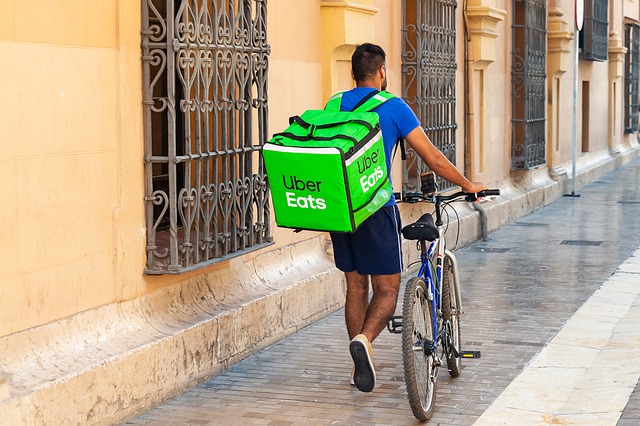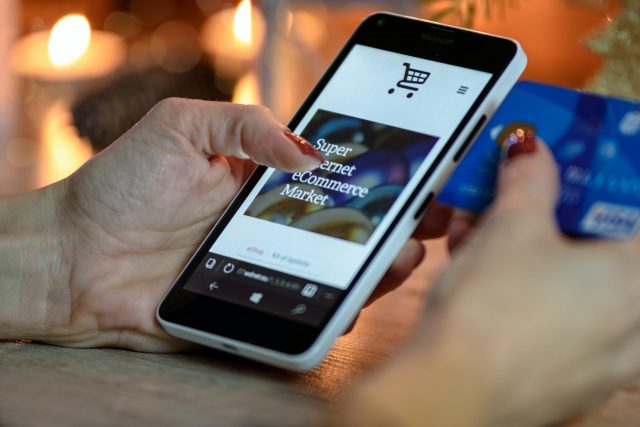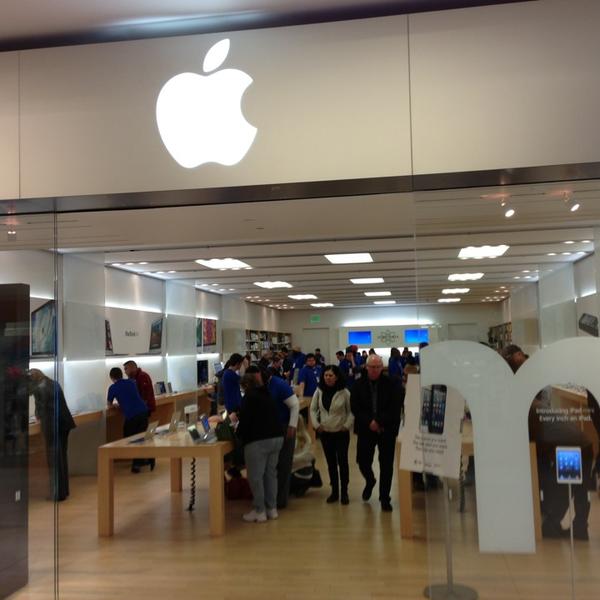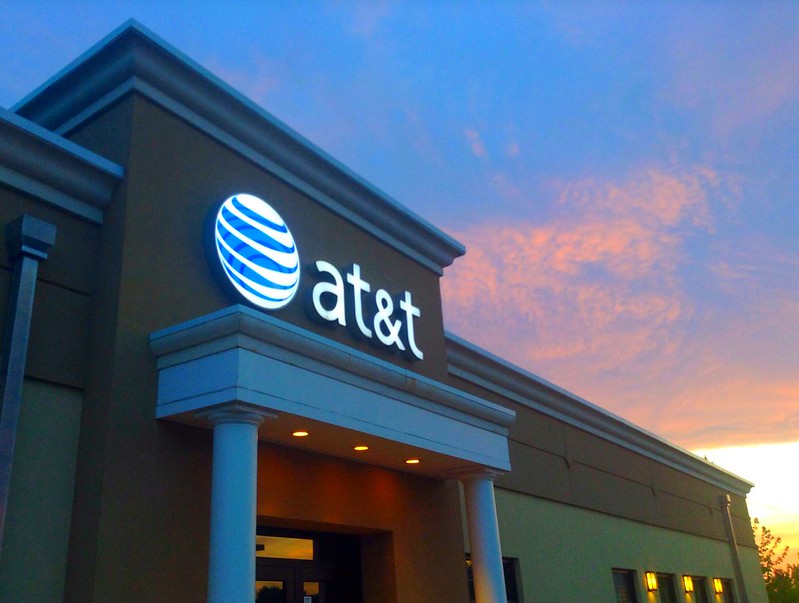Having a solid, well-thought-out business model is essential for both new and established companies. These models work to attract new customers and anticipate any upcoming trends or unseen challenges. It also can allow the company to differentiate itself from competitors. Potential investors use business models to quickly and effectively analyze a company’s plans and flesh out information such as how they plan to generate income. Even if you are a small business with no plans of taking on investment, knowing and understanding your business model is crucial to your success.
There are many different types of business models to choose from. It can become overwhelming to decide which model would work best for a company’s individual needs and preferences. This article will analyze and define 21 of the top business models currently used to better understand what each type offers your company.
What is a Business Model?
Through the years, the term business model has had several different definitions. But essentially, a business model is simply an outline of how a company plans to make money with its product or service. Peter Drucker defined the term as “assumptions about what a company gets paid for”. At their core, they all work to identify revenue sources, the customer base for their products and services, and the expenses the company anticipates to allocate to marketing these products and services.
Understanding your business model is important for many reasons. One of those reasons is that when you understand your business model, you are also closer to answering many other important questions about your business. When your business model is clear you get a better idea of who your customers are. And once you understand that, you also can answer the question “how does our business model add value to our customer”.
Not knowing, understanding, and choosing the right business model can be detrimental to your business. Later in the article, we explain how choosing the wrong business model is costing one company hundreds of millions of dollars. But for now, all you need to know that if your business model does not match up well with your product and what the market demands, you may soon see your profits dwindle as competition increases.
If you are not sure if you have the right business model for your business, or if your current business model is running out of gas, read our list of 21 business models to see if there is another, better, solution for you.
21 Types of Business Models
1. Freemium Business Model
Freemium is a combination of the words free and premium. Companies following the freemium business model offer the most basic version of their product or service for free to entice consumers to purchase the more advanced features, capabilities, or add-ons of the product or service in the future. The freemium business model works for new companies by cultivating strong relationships with customers. It also works best for internet-based service companies.
Freemium business model examples:
- Dropbox
- Pandora
- Zapier
- Spotify
2. Subscription-Based Model
The subscription-based model allows companies to charge consumers monthly or yearly subscription fees to access their product or service. This model depends on these consumers continuing to love and utilize the service. To keep consumers satisfied and paying monthly subscription fees, companies need to continually improve their products or services to keep up with changing trends or competitors. The subscription-based model is popular with streaming services like Hulu, Netflix, and Spotify. It is also popular among monthly subscription boxes for beauty and fashion such as Ipsy or FabFitFun. The ideal profit margin varies depending on the type of subscription.
Physical subscription based businesses should aim for 30%-40% profit margins. Streaming services do not directly report profit margins but the figures can somewhat be figured out by the average revenue per user. Although it may be hard to find those numbers for all services, most services only make between $4-$10 revenue per user.
Subscription-based model examples
- Streaming services
- Birchbox
- Dollar Shave Club
- XBox Game Pass
- Peloton
3. Peer-to-Peer Business Model
In a peer-to-peer business model, a company acts as the go-between businesses and the customers interested in purchasing their products or services. The companies using this model provide the platforms, navigate the regulations, and set pricing for the products or services. A well-known example of this business model would be ride-sharing services such as Lyft and Uber. These platforms allow people to receive rides to and from requested destinations by those who apply to be drivers for the service.
Peer-to-peer business model examples
- Uber
- Lyft
- Airbnb
- eBay
- Match.com
4. Franchise Model
Sometimes the franchise model is referred to as a hybrid model. It provides a sense of working for oneself with the added security of having a company’s backing with familiar trademarks and products. There is a legal and commercial relationship between the franchisor, the parent company owner (usually a corporation), and the franchisee. The franchisee (or business owner) is allowed to sell the franchisor’s products or services in exchange for paying a royalty fee. Both parties sign contracts to clarify the specifics, spelling out each side’s role in the business relationship.
Franchise model examples
- Subway
- McDonald’s
- UPS Store
- Dunkin’
- Merry Maids Residential Cleaning
5. Direct Sales Business Model
In the direct sales model, a company’s employees will be the ones who demonstrate and sell the products or services being offered directly to the intended consumers. This effectively eliminates steps within the distribution process, such as wholesalers and the regional distribution centers. Direct sales is a great way to build strong, lasting customer relationships. One common direct selling types is single-level marketing (SLM). This is when a salesperson is compensated for their sales. Another second type is called multilevel marketing (MLM). This model is when a person is compensated for sales made by salespersons recruited by them and under their authority.
Direct sales business model examples:
- Avon
- Stella & Dot
- Mary Kay
- Amway
- Scentsy
6. Affiliate Marketing Business Model
People using the affiliate marketing business model promote and sell products from other companies online to get paid a percentage of the sales they make. This business model is common with “influencers” on Instagram or other leading social media apps. They will post about a company’s product to entice their followers to buy it through them. Many of their followers will buy the product through the supplied link. It is a win-win situation for both the influencer marketing the product and the company selling it. Affiliate business models are also popular among bloggers and online publishers.
There are 4 primary ways an affiliate can earn money from an affiliate program.
-
- Pay Per Sale (PPS) – Affiliate earns a commission when a sale is made.
- Pay Per Click (PPC) – Affiliate earns a commission whenever an affiliate link is clicked.
- Pay Per Impression (PPI) – Affiliate earns a commission when a visitor lands on the merchant’s site.
- Pay Per Lead (PPL) – Affiliate earns a commission when someone clicks on affiliate link and then takes an action such signing up for a free trial or completing a form.
Affiliate marketing business model examples:
- Amazon Affiliates
- Commission Junction (CJ Affiliate)
- ShareASale
- Clickbank
- Affiliaxe
7. E-Commerce Business Model
Electronic commerce, or “e-commerce,” is a business model in which companies and individuals buy and sell products and services online. Because the business is entirely online, the products and services offered are nearly limitless. An e-commerce business offers companies the extra convenience of not needing a physical store. This increases the selection of products available to consumers. A business might combine the e-commerce model with the drop-shipping model.
Types of E-commerce business models
- B2B: Business to Business Ecommerce- The B2B model focuses on providing products from one business to another.
- B2c: Business to Consumer Ecommerce- B2C model focuses on businesses providing products to the consumer base
- C2C: Consumer to Consumer Ecommerce- C2C model focuses on consumers selling directly to other consumers. Sites like eBay and Craigslist are examples of C2C companies.
- C2B: Consumer to Business Ecommerce- This model is when a consumer sells products or services to businesses. Those in this line of work will often times be freelancers and sole proprietors.
8. Drop-Shipping Business Model
Companies using the drop-shipping business model sell various products on their websites, but supplying and shipping these products is done by a third-party wholesaler. The significant upside to this business model is that you do not need to pay for or maintain inventory for any of the products you sell. It can be costly to store, package, and mail out orders. In the drop-shipping model, a third party (which is typically the wholesaler) will handle the logistics of shipping and making sure the customers receive the products they ordered. The individual who marketed the products gets a percentage of the sales.
9. Vertically Integrated Business Model
The vertically integrated supply chain business model is when the company controls both supply and distribution. The company controls all costs of production, inventory stocked, marketing, and pricing. Because the company has complete control of the product from start to finish, it can decrease transportation costs and improve sales and profitability.
Vertically integrated business model examples
- Apple
- Amazon
- Ikea
- Zara
- Netflix
10. Consulting Business Model
There are two parts to the consulting business model. First, hiring experts or developing a list of freelancing consultants, and second, charging a fee to provide access to these experts by your clients. Typically, your experts will provide a service that speaks to the consumer’s needs. Hopefully, the customer will return to you as further needs arise. Common examples of this could be online tutoring, mentoring, and freelance work in several different fields.
11. Ad-Supported Business Model
Advertising is a significant component in why some companies are incredibly profitable and why some will financially fail. Failure to advertise a product or service can lead to people not even knowing a company exists. The ad-supported business model emphasizes the importance of advertising and the sales generated from it. Popular platforms to advertise products or services include print media, online media, and television.
Ad-supported business model examples
- CNN
- Fox News
- ABC
- NBC
- CBS
12. Enterprise Business Model
In the enterprise business model, specific aspects of a business are modeled, such as infrastructures and asset groups. The company leaders will see what needs to be altered within the business to maximize profits. The enterprise model is more about evaluating how the business is functioning than it is about the overall structure of the business.
13. Lock-In Business Model or Lock-In Strategy
The lock-in business model takes customer loyalty and kicks it up a notch. This is done by essentially locking customers into a company’s product or service by making it difficult to abandon the company without dealing with negative consequences. Some of these consequences include increased costs or making it difficult to switch. For example, Apple compels customers to stick with them by making it extremely simple to sync every Apple product. But, also make it challenging to use their products alongside competitors. For example, the Apple watch is nearly impossible to use with an Android phone. A lock-in business model ideally leads to customers sticking with one company for the long haul.
Lock-in examples:
- Apple utilizes this strategy
- Kindle
- Some major banks utilize this strategy as well
- Microsoft Office Suite
14. Multi-Brand Business Model

Old Spice has done a brilliant job marketing their multi-brand business with clever and hilarious advertisements.
With the multi-brand business model, a parent company will offer similar products with different brand names to increase their market share. By doing this, the company effectively reduces any potential competition. A company with many similar products at different price points will appeal to a significant number of customers.
Multi-brand companies examples:
- Maybelline
- Procter & Gamble
- Tide
- Old Spice
- Pampers
15. Razor and Blade Model
The razor and blade model works by selling products or services to consumers at a lower price. Then later selling a related product or service to the consumer for increased profits. The name razor and blade comes from King Gillette. Gillette effectively worked to overtake the men’s razor market by offering a sturdy and reliable razor that required the use of blades only sold by Gillette. As a result, the company cornered the market on razors for a time and is still dominate today.
Examples of razor and blade business model:
- Gillette
- Playstation
- Xbox
- Computer printer manufactures
16. Distribution Based Business Model
The distribution-based business model facilitates the distribution of products or services offered from the manufacturers to the consumers. With this model, the business ensures that the mode of distribution chosen to get the product or service to the consumer is the most direct, and more importantly, the most cost-efficient manner possible. No one distribution method is universal for all companies. The chosen methods depend on such factors as your product’s perishability, target market, and geographic area covered by your company.
17. Direct-to-Consumers Business Model
With the direct-to-consumer business model, consumers buy products or services directly from a company’s website, eliminating the middle-man. The model not only saves the company money but can be convenient for the customer as well. Consumers would have to physically visit a store to purchase the product they desire but know they can order the product directly from the company or manufacturer. There is no longer a need for a brick-and-mortar store, saving the company money. The company tends to have greater control over their branding and stronger relationships with their customers with this model, leading them to buy from the company again.
In recent years, however, the DTC model has struggled to scale on its own for many larger companies. One of the pioneer companies in this type of business model was the DTC mattress company Casper. This company was once seen as a unicorn startup a decade ago but has seen its market share and valuation plummet. The company’s IPO attempt in 2020 was nothing short of a disaster. At one point, Casper was valued at more than $1 billion. But, at the time of its regulatory filing, it had cut its IPO target share price to $12 to $13 from $17 to $19. That valued the company at around $500 million. A lawsuit was even filed accusing Casper of misleading investors into pouring $100 million into its IPO, knowing its financial prospects were far dimmer than it promised.
Examples of direct-to-customers business model:
- Apple Store
- Warby Parker
- Casper Mattresses
18. Low-Touch Business Model
Some customers want the least amount of interaction with the company possible. Businesses that want to meet that need should adopt a low-touch business model. Products sold using this model can be consumed or used with little interference from salespersons or customer service. Due to the pandemic of 2020, many businesses learned to adapt to the threat. These businesses adopted low-touch strategies to help keep their doors open. For example, more take out restaurants began using kiosks for ordering instead of placing an order with a human team member.
Other sectors such as hotels began using virtual check-ins through apps. This limited contact with other guests in the hotel lobby as well as employees of the hotel. As we return to normal, it is believed that many of these businesses will retain their low-touch option and many other businesses will begin using this practice also.
Low-touch business model examples:
- Amazon
- Wal-mart Online
- eBay
- e-commerce sites
19. Fractionalization Business Model
In this model, companies will sell partial usage of their product or service to consumers, such as offering a timeshare deal for a condominium in a desirable location. Consumers will receive full benefits of the timeshare when they are there, but they can only be there for a pre-determined time each year.
20. Pay-As-You-Go Model
As the name suggests, consumers will pay for the service or product as they use it. Meaning there is no recurring bill or subscription necessary. This model should entice those who do not like to be tied down. If the product or service is of high quality and worth the price paid, they will continue using it.
Pay-as-you-go model examples:
- Cell phone carriers
- Power companies
- Internet service providers
21.User-Generated Content Business Model
User-generated content business is a type of content distribution platform where the users create the content. Social media platforms and sites like Youtube and Quora are successful due to the content that is nearly 100% user-generated. This model eliminates the need to create content as a primary way to engage visitors. This is another type of business model that is often combined with the advertising model. But unlike traditional content distribution platforms like CNN and Fox News, UGC sites typically adopt the personality of their users.
User-generated content business model:
- Youtube
- Online forums
Conclusion
In conclusion, the different types of business models mentioned will appeal to a wide range of companies’ needs and preferences, including highly niched marketed ones. When picking a company’s business model, it is vital to consider what would be appropriate for the company as a whole and the intended consumer. Which model will entice the target market to buy (and continue to buy) from the company? Using the right business model will maximize profits and provide clear, practical ideas to sustain profitability for years to come.
Additional photo credits: Under CC


















Pingback: Understanding How the Producer Enterprise Mannequin Works - The Owl Report
Pingback: Understanding How the Producer Enterprise Mannequin Works – Webbizmarket.com
Pingback: Why the Subscription Business Model Works So Well - StartUp Mindset
Pingback: Pay As You Go Enterprise Mannequin: What It Is and How It Works – Webbizmarket.com
Pingback: Pay As You Go Business Model: What It Is and How It Works – PHL Tech Magazine
Pingback: Pay As You Go Enterprise Mannequin: What It Is and How It Works - The Owl Report
Pingback: Pay As You Go Business Model: What It Is and How It Works - StartUp Mindset
Pingback: What is the Peer-To-Peer Business Model and Does it Work? - StartUp Mindset
Pingback: 5 Things to Understand About the Catering Business Model - StartUp Mindset
Pingback: 10 Things to Know Before Starting a Business – PHL Tech Magazine
Pingback: 10 Issues to Know Earlier than Beginning a Enterprise - The Owl Report
Pingback: 10 Things to Know Before Starting a Business - StartUp Mindset
Pingback: Understanding the Media Company Business Model - StartUp Mindset
Pingback: Business Model for Staffing Agency Explained - StartUp Mindset
Pingback: The Enterprise Mannequin for a Nonprofit Defined - The Owl Report
Pingback: How a Print-on-Demand Service Can Revolutionize Your Business - StartUp Mindset
Pingback: Food & Restaurant Subscription Business Models and How They Work - StartUp Mindset
Pingback: 5 Types of Consulting Business Models - StartUp Mindset
Pingback: Bricks-and-Clicks Enterprise Mannequin: Definition, Examples, Advantages, and Challenges - The Owl Report
Pingback: Bricks-and-Clicks Business Model: Definition, Examples, Benefits, and Challenges - StartUp Mindset
Pingback: The Lean Business Model Explained - StartUp Mindset
Pingback: 7 Business Models For Artists - StartUp Mindset
Pingback: The Crowd Funding Enterprise Mannequin Defined - The Owl Report
Pingback: The Crowd Funding Business Model Explained Krownjobs.com - krownjobs
Pingback: The Crowd Funding Business Model Explained - StartUp Mindset
Pingback: Ghost Kitchen Business Model Explained - StartUp Mindset
Pingback: Ventajas y desventajas del modelo comercial de ladrillo y mortero - MundoEmprendedor.Online
Pingback: 10 Types of Ecommerce Business Models and How They Work Krownjobs.com - krownjobs
Pingback: 4 Main Business Models for Coffee Shops | Biz Builder Mike
Pingback: 4 Essential Enterprise Fashions for Espresso Outlets - The Owl Report
Pingback: 7 Enterprise Fashions For Artists - The Owl Report
Pingback: 7 Business Models For Artists | Biz Builder Mike
Pingback: 7 Enterprise Fashions For Artists - The Owl Report
Pingback: The SaaS Company Business Model Explained | Biz Builder Mike
Pingback: The SaaS Firm Enterprise Mannequin Defined – Consigli digitali
Pingback: Business Model for a Cleaning Service Explained - StartUp Mindset
Pingback: (Uploaded) Advertising and marketing Consulting Enterprise - StartUp Mindset - Guide Matter
Pingback: What is the Retail Business Model and How Does it Work? | Biz Builder Mike
Pingback: (Uploaded) Marketing Consulting Business | Blockchain Consultants
Pingback: (Uploaded) Marketing Consulting Business - StartUp Mindset
Pingback: (Uploaded) Marketing Consulting Business | Biz Builder Mike
Pingback: The Direct-to-Consumer Business Model Explained
Pingback: The Direct-to-Consumer Business Model Explained | Blockchain Consultants
Pingback: The Direct-to-Client Enterprise Mannequin Defined - Guide Matter
Pingback: The Direct-to-Consumer Business Model Explained | Biz Builder Mike
Pingback: 4 opciones de oportunidades comerciales para estructurar su negocio para el éxito - MundoEmprendedor.Online
Pingback: Pros y contras de un modelo de negocio de franquicia - MundoEmprendedor.Online
Pingback: Comprensión del modelo comercial de Razor and Blade - MundoEmprendedor.Online
Pingback: 5 modelos de negocios basados en Internet y cómo funcionan - MundoEmprendedor.Online
Pingback: Comprender el modelo comercial de ventas directas - MundoEmprendedor.Online
Pingback: The Solopreneur Enterprise Mannequin Defined - Guide Matter
Pingback: Tips on how to Launch Your Personal Ecommerce Website - Guide Matter
Pingback: How to Launch Your Own Ecommerce Site - StartUp Mindset
Pingback: Understanding the Direct Sales Business Model | Biz Builder Mike
Pingback: Understanding the Direct Sales Business Model - All About Pakistan
Pingback: Advantages and Disadvantages of the Brick-and-Mortar Business Model - StartUp Mindset
Pingback: 5 Web-based Enterprise Fashions and How they Work - Isurance Club
Pingback: 9 Key Elements of a Subscription-Based Business Model - StartUp Mindset
Pingback: What Business Model Should I Choose? Here are 5 Ways to Decide - StartUp Mindset
Pingback: 3 Types of Vertical Integration to Understand for Business Growth - DrDons ICFO 'BOW Business' News Media
Pingback: Pros and Cons of a Franchise Business Model - StartUp Mindset
Pingback: Understanding the Razor and Blade Business Model - StartUp Mindset
Pingback: Understanding the Razor and Blade Enterprise Mannequin - Isurance Club
Pingback: 4 Enterprise Alternative Choices to Construction Your Enterprise for Success - Isurance Club
Pingback: 3 Reasons Why The Freemium Model Works - Apex Breaking News Today
Pingback: Pros and Cons of a Freemium Business Model for You and Your Customers - DrDons ICFO 'Profit Business Marketing' News Media
Pingback: Pros and Cons of a Freemium Business Model for You and Your Customers - StartUp Mindset
Pingback: Amazon's Business Model: 4 Ways Amazon Makes Money and How Much It Makes? - StartUp Mindset
Pingback: When Is It Time to Change Your Enterprise Mannequin? - Isurance Club
Pingback: 8 Key Elements Of A Business Model that You Should Understand - StartUp Mindset
Pingback: Fortnite's Dynamic Enterprise Mannequin: How Fortnite Makes Cash and How A lot It Makes. - Isurance Club
Pingback: What's the Peer-To-Peer Enterprise Mannequin and Does it Work? - isuranceclub.cc
Pingback: 8 Key Elements Of A Business Model that You Should Understand - Profiting From Business and Marketing News
Pingback: 8 Key Elements Of A Business Model that You Should Understand » AtSo
Pingback: 8 Key Elements Of A Business Model that You Should Understand - All About Pakistan
Pingback: 8 Key Elements Of A Business Model that You Should Understand - Business Huffpost
Pingback: 10 Steps to Overcome and Bounce Back from a Business Failure – Small Business
Pingback: 10 Steps to Overcome and Bounce Back from a Business Failure - StartUp Mindset
Pingback: What Business Model does Uber Use? - StartUp Mindset
Pingback: How to Ask the Right Questions that Push You Closer to Your Goals
Pingback: What Business Model Should I Choose? Here are 5 Ways to Decide – Small Business
Pingback: 45% of New Businesses Fail Within 5 Years: Here Are the 7 Reasons Why – Small Business
Pingback: 45% of New Businesses Fail Within 5 Years: Here Are the 7 Reasons Why - StartUp Mindset
Pingback: 10 Top Franchises for Under $25,000 - StartUp Mindset
Pingback: 8 Steps to Start Your In-brand Subscription Box Service - StartUp Mindset
Pingback: What Makes a Winning Team? Here are the Key Personnel Your Business Needs to Thrive - StartUp Mindset
Pingback: How to Ask the Right Questions that Push You Closer to Your Goals - StartUp Mindset
Pingback: 21 Different Types of Business Models With Examples – Entrepreneur – Start, Run and Grow Your Business